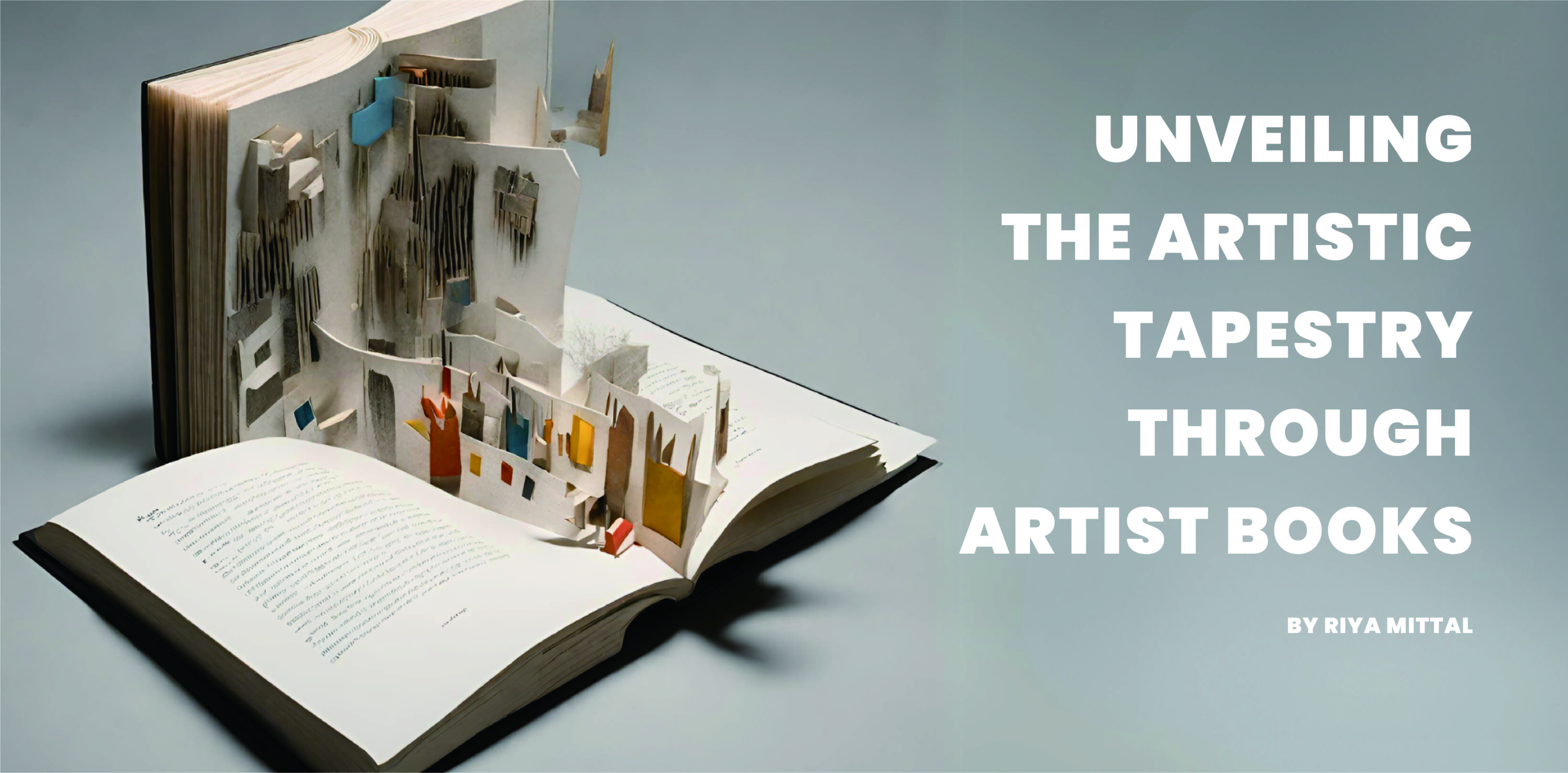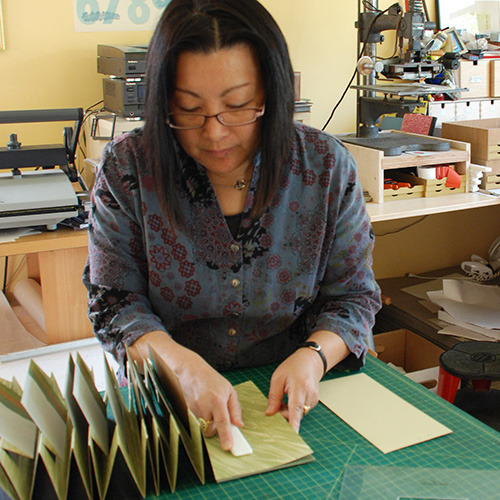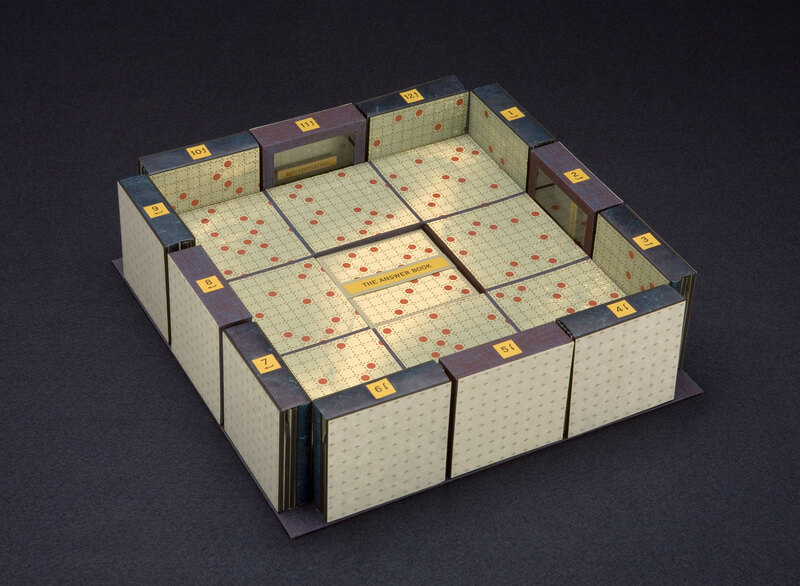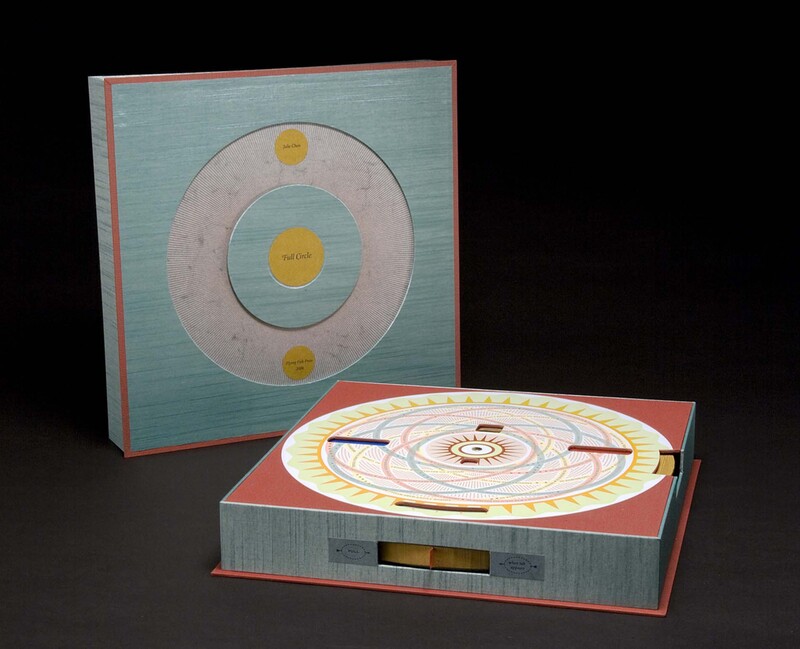
Exhibit curated by Riya Mittal
In a recent interview with Julie Chen, the acclaimed author of "Book of Hours" and other artistic masterpieces, we delved into the intricate world where art and information seamlessly converge. Chen's unique perspective and innovative approach to combining text and image in her books, particularly "A Guide to Higher Learning" and "Full Circle," offer a captivating insight into the realm of artist’s books and generative diagrams.
Chen's primary focus is on providing readers with an immersive experience, allowing them to perceive information in ways they might not grasp otherwise. Describing her work as an attempt to make the world understandable through art, she emphasizes the importance of starting her creative process with a distinct idea, be it in the form of an image or text.
Photo by Luz Marina Ruiz, © Julie Chen
One of the standout features of "Full Circle" is its incorporation of moveable parts and generative diagrams. Chen skillfully weaves together the tactile and visual elements, offering readers an interactive journey through her art. This hands-on approach aligns with her belief that text and image must be combined to create something entirely new, a concept only comprehensible when the two are considered together.
A page from Full Circle
Chen's creative process involves refining her ideas until the text and image harmonize, much like a Venn diagram where the two elements complement each other. Her commitment to the synergy of text and image is evident in "A Guide to Higher Learning," where she employs lines, origami diagrams, and folds to elucidate complex subjects such as mathematics. In the interview, she advises diagram enthusiasts to explore this book, asserting that failure is an integral part of the learning process, reinforcing the notion that attempting and failing is, in itself, a valuable learning experience.
Unfolding A Guide to Higher Learning
Chen's dedication to creating alternative reading materials extends beyond the artistic realm. "A Guide to Higher Learning" serves as an exemplary resource for students with learning disabilities, utilizing innovative visual elements to enhance understanding. The integration of diagrams, lines, and origami fold patterns transforms complex subjects into accessible and engaging learning experiences.
In "Book of Hours," Chen's adept use of data visualization becomes apparent, offering an impeccable representation of the tumultuous COVID-19 pandemic. While she doesn't categorize the book as a diagram per se, certain elements within it, such as the doomsday clock and cone motifs, bear resemblance to the diagrammatic form. Chen's work serves as a testament to the power of artistic expression in capturing the essence of significant global events.
A page from the Book of Hours
It's essential to note that Julie Chen sees herself first and foremost as an artist, not a scholarly content expert. Her humility and commitment to the creative process shine through in her work, reminding us that art, like learning, is a continuous journey of exploration and discovery. As readers and enthusiasts, we are invited to join Chen on this insightful expedition into the intersection of art, books, and diagrams, where failure becomes a stepping stone to knowledge, and each page turns into a canvas for a unique visual and intellectual experience.
STILLS FROM THE BOOKS
Books Available at Lauinger Library
To Request Books
To request the books featured on this page, kindly contact Jay Sylvestre, the Curator of Rare Books at Booth Family Center for Special Collections, Georgetown University: jay.sylvestre@georgetown.edu









